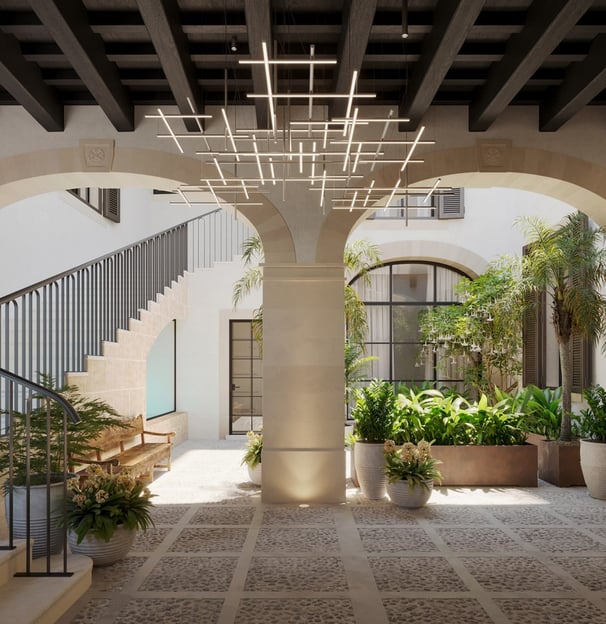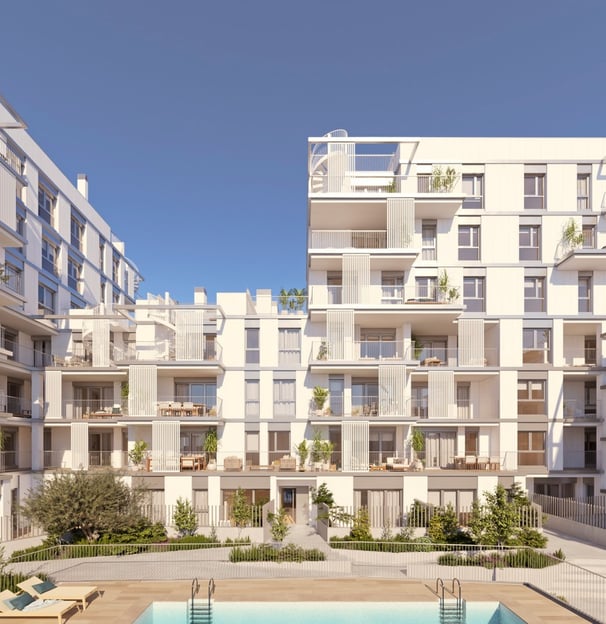A Billionaire’s Playground
10 min read


The Transformation of Mallorca: A Billionaire’s Playground and the Local Struggle
Mallorca, the largest of Spain’s Balearic Islands, has undergone a significant transformation over the past three decades. Once known primarily as a package holiday destination, the island is now a haven for the super-wealthy, drawn by its natural beauty, luxurious amenities, and the allure of an idyllic Mediterranean lifestyle. However, the surge of billionaires and international investors has created a sharp divide between the island’s elite and its local population, who increasingly face challenges such as the rising cost of living and an acute shortage of affordable housing. This blog entry will delve deeper into how the influx of wealth is reshaping Mallorca’s property market and local communities.
A Luxury Destination for the World’s Wealthiest
Mallorca has become a top destination for high-net-worth individuals, many of whom purchase second homes or make the island their permanent residence. With its impressive array of 65 five-star hotels, 47 marinas, 23 golf courses, and 18 international schools, Mallorca rivals some of the world’s most exclusive locations. It has become a popular mooring spot for the yachts of billionaires such as Jeff Bezos and Jack Ma, who were seen here last summer.
The island’s appeal is not just limited to superyachts and luxury resorts; it’s also about privacy, security, and exclusivity. Estate agents like Engel & Völkers have reported that four of the UK’s ten richest people now own properties on Mallorca, including the billionaire industrialist Sir Jim Ratcliffe. Wealthy buyers are drawn to its stunning landscapes, perfect year-round climate, and high-quality lifestyle offerings. Yet, while the glittering success of Mallorca’s luxury market is undeniable, the impact on the local population has been significant and, for many, deeply troubling.
The Transformation of Mallorca: A Billionaire’s Playground and the Local Struggle
Mallorca, the largest of Spain’s Balearic Islands, has undergone a significant transformation over the past three decades. Once known primarily as a package holiday destination, the island is now a haven for the super-wealthy, drawn by its natural beauty, luxurious amenities, and the allure of an idyllic Mediterranean lifestyle. However, the surge of billionaires and international investors has created a sharp divide between the island’s elite and its local population, who increasingly face challenges such as the rising cost of living and an acute shortage of affordable housing. This blog entry will delve deeper into how the influx of wealth is reshaping Mallorca’s property market and local communities.
A Luxury Destination for the World’s Wealthiest
Mallorca has become a top destination for high-net-worth individuals, many of whom purchase second homes or make the island their permanent residence. With its impressive array of 65 five-star hotels, 47 marinas, 23 golf courses, and 18 international schools, Mallorca rivals some of the world’s most exclusive locations. It has become a popular mooring spot for the yachts of billionaires such as Jeff Bezos and Jack Ma, who were seen here last summer.
The island’s appeal is not just limited to superyachts and luxury resorts; it’s also about privacy, security, and exclusivity. Estate agents like Engel & Völkers have reported that four of the UK’s ten richest people now own properties on Mallorca, including the billionaire industrialist Sir Jim Ratcliffe. Wealthy buyers are drawn to its stunning landscapes, perfect year-round climate, and high-quality lifestyle offerings. Yet, while the glittering success of Mallorca’s luxury market is undeniable, the impact on the local population has been significant and, for many, deeply troubling.








The Housing Crisis for Locals
The shift in Santa Catalina is symbolic of the broader changes occurring across Mallorca. Markets that once catered to locals have evolved into spaces aimed at attracting wealthier tourists, featuring upscale gourmet stands and high-end retail shops. Traditional bars and local meeting spots have been replaced by flashy nightclubs and high-end restaurants, dramatically altering the character of the neighbourhood. This transformation, driven by tourism and foreign investment, has led to soaring property values and rent increases, making it increasingly difficult for average Mallorcans to afford to live in areas they once called home.
A major contributor to this housing crisis has been the proliferation of short-term rentals, particularly through platforms like Airbnb. As tourist demand skyrocketed, many property owners saw an opportunity to convert their homes into short-term holiday rentals, which could generate significantly higher income compared to long-term leasing. This influx of short-term rental properties led to complaints from local residents about noise, overcrowding, and disruption to daily life. Neighbourhoods such as Santa Catalina, once peaceful and community-driven, became hotspots for loud parties and transient visitors, further alienating long-time residents and contributing to the displacement of local families.
In response to mounting concerns, the Mallorcan government has taken significant steps to curb the rise of short-term rentals, particularly in densely populated areas like Palma. In 2018, local authorities introduced stringent restrictions aimed at limiting the number of short-term rental licences available, effectively making it much harder for property owners to list their homes on platforms like Airbnb. These regulations were implemented with the goal of alleviating the housing crisis, preserving the integrity of local communities, and ensuring that locals had a fair opportunity to access affordable housing.
These measures, while welcomed by many residents, sparked intense debates and even protests. Local advocacy groups have emerged, calling for even stricter regulations on short-term rentals and increased government oversight of property development. Protests in Palma have drawn attention to the wider issue of overtourism and its impact on local communities. Residents have taken to the streets to express their frustration over rising rents and the ever-decreasing availability of affordable housing, as well as the disruptive presence of short-term holidaymakers in what were once quiet, residential neighbourhoods.
In particular, the protests have highlighted the broader issue of how mass tourism and foreign investment are reshaping the island’s economy and social fabric. While tourism remains a crucial part of Mallorca’s economy, many locals feel that the balance has tipped too far in favour of attracting wealthier tourists and international buyers, at the expense of long-term residents. The surge in property development and luxury real estate, driven by global demand, has exacerbated these concerns, as it further drives up the cost of living on the island.
Efforts to reduce the number of short-term rentals have been seen as a necessary intervention to stabilise housing prices and prevent the complete gentrification of neighbourhoods like Santa Catalina. By making it harder to obtain Airbnb licences, the government hopes to encourage more property owners to lease their homes to local residents on a long-term basis, thereby helping to ease the housing crisis. Moreover, authorities have capped the number of hotels that can be developed in Palma, aiming to limit the over-commercialisation of the city and retain its historic charm and local character.
However, despite these efforts, the tension between the needs of the local population and the interests of international buyers remains high. Many argue that while the restrictions on short-term rentals and new hotel developments have provided some relief, they do not go far enough to address the root causes of the housing crisis. As the number of wealthy investors continues to grow, and property prices continue to soar, the gap between the ultra-rich newcomers and Mallorca’s long-standing residents is only widening.
Ultimately, the question remains: can Mallorca find a sustainable balance between catering to its vital tourism industry and protecting the interests of its local population? The island’s charm, culture, and natural beauty are its greatest assets, but without careful management, there is a risk that the very qualities that make Mallorca unique could be eroded by unchecked development and the growing dominance of the global elite. As protests and public pressure mount, the future of Mallorca’s housing market will depend on the ability of local authorities to navigate these complex issues and create a fairer, more equitable system for all its residents.
Read our recent blog on the issue here
The Rise of Luxury Property Developments
While the local government has sought to protect residents’ interests, the demand for luxury homes on the island continues to surge. International buyers are not deterred by high property prices or the costs associated with restoring historic buildings to their former glory. In fact, these challenges seem to add to the appeal. One example is the renovation of Can Granada, a 16th-century palacio in Palma’s old town. Led by Mallorcan architect Juan Llobera, this extensive four-year restoration project will transform the palacio into six luxury apartments, with prices ranging from €1.77 million to €5.17 million.
These properties cater to ultra-wealthy buyers who appreciate a blend of history and modernity. Can Granada’s apartments retain their original stone arches and wooden beams, while offering modern comforts such as underfloor heating and smart-home systems. With a spa, swimming pool, and sauna, the development is a prime example of how Mallorca is evolving to meet the needs of the global elite. However, the cost of such renovations is prohibitive, and only those with deep pockets can afford to restore and inhabit these historic homes. As a result, Mallorca’s heritage properties are becoming increasingly exclusive.
The Impact of the Wealth Tax
Despite the consistently rising property prices, Mallorca continues to attract wealthy investors, bolstered in part by recent changes in the Balearic Islands’ wealth tax. In January 2024, the exemption limit for this tax was raised significantly, from €700,000 to €3 million per person, irrespective of residency status. This substantial tax break has made the island an even more appealing destination for affluent buyers, prompting a surge in interest in Mallorcan real estate, particularly in luxury hotspots like Palma and the southwest coast.
This tax adjustment is seen as a deliberate move by the authorities to foster further investment from high-net-worth individuals and multinational entrepreneurs, especially those involved in technology and international business. By raising the threshold, the Balearics have become a more attractive option for those seeking a tax-efficient environment while benefiting from the island’s stunning landscapes, world-class amenities, and lifestyle opportunities.
The impact of this policy shift has been particularly visible in the island’s luxury property market, which has seen remarkable growth over recent years. Hans Lenz, managing director of Engel & Völkers Mallorca Southwest, points out that 2016 was a pivotal year for this market. It was during this time that properties in Mallorca began to break the €20 million barrier for the first time, marking a new era of ultra-luxury real estate on the island. The trend has continued to accelerate, with 2023 witnessing six sales of properties in the southwest region exceeding the €20 million mark. These record-breaking sales highlight the growing demand from the global elite, including entrepreneurs, business leaders, and technology workers, who are increasingly choosing Mallorca as their primary or secondary residence.
This demand for high-end properties is also a reflection of the wider trend of wealthy individuals seeking safe havens and lifestyle destinations that offer both privacy and prestige. In particular, Mallorca’s ability to offer an attractive combination of modern amenities and infrastructure, alongside its natural beauty and Mediterranean climate, makes it a prime location for international investors.
Palma, the island’s capital, has emerged as a focal point for this luxury property boom. Historic neighbourhoods, once characterised by traditional architecture and local businesses, have become sought-after areas for renovation and development. Wealthy buyers are snapping up palacios and villas, converting them into luxury homes that blend historical charm with contemporary comforts. The southwest coast, too, has seen a rise in exclusive developments, with private estates offering breathtaking views and state-of-the-art facilities becoming the new standard for luxury living on the island.
This surge in demand, driven by changes in tax policy and the continued appeal of Mallorca’s lifestyle, underscores the island’s growing reputation as a global luxury destination. However, it also raises questions about the long-term sustainability of such rapid growth and its impact on the local population, as the increasing focus on attracting wealthy investors continues to drive up property prices, making it increasingly difficult for locals to afford housing in many parts of the island.
(Source: The Times, September 2024)
The Struggle for Balance
For many locals, the influx of billionaires represents a double-edged sword. On the one hand, tourism and international investment are critical to the island’s economy, providing jobs and generating revenue. On the other hand, the cost of living has skyrocketed, and the availability of affordable housing has diminished. It’s not just the capital city of Palma that has been affected; even rural areas are seeing property prices soar, making it increasingly difficult for locals to stay on the island they call home.
Despite the implementation of restrictions on new hotel developments and short-term rentals, which have provided some alleviation, the widening divide between the island’s affluent newcomers and its long-standing residents remains significant. Many long-term property owners in areas such as Palma’s historic Jewish Quarter are choosing to downsize or relocate, driven by the changing dynamics of the island. The attraction of living in central Palma, with its walkability and vibrant atmosphere, is increasingly overshadowed by the evolving landscape. Outside of peak tourist seasons, certain areas can feel deserted, and the cultural identity of the island appears to be shifting. What was once a close-knit community is now undergoing rapid transformation, with many local and long-term residents struggling to reconcile their connection to the island with the influx of wealth and modernisation. This growing economic and social disparity highlights the broader issue of how global capital and tourism-driven development can dramatically alter the fabric of a place, leaving some to lament the loss of the familiar while others embrace the change.
Conclusion: What’s Next for Mallorca?
As Mallorca’s property market continues to cater to billionaires and high-net-worth individuals, the island finds itself at a crossroads. The challenge lies in balancing the needs of its wealthy newcomers with the rights and livelihoods of its local population. While the government has taken steps to address some of the housing issues, the broader question remains: how can Mallorca retain its cultural identity and sense of community in the face of such rapid change?
For visitors, Mallorca remains a paradise — a place where history meets luxury and the Mediterranean way of life is available in its most glamorous form. But for locals, the island’s transformation is a bittersweet reminder of how quickly fortunes can shift, and how difficult it can be to find equilibrium between progress and preservation.






